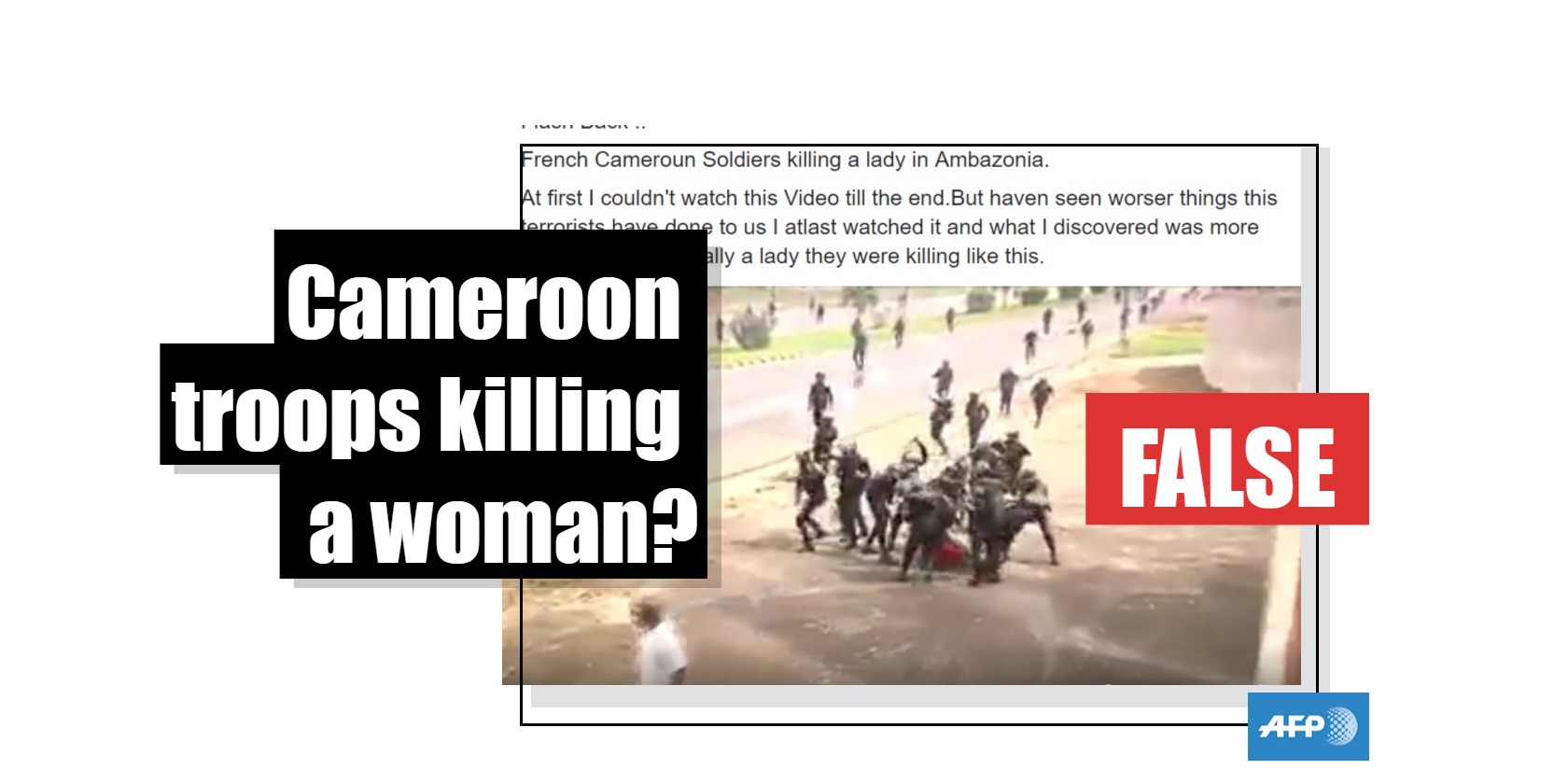
No, this video does not show a woman being killed by Cameroon troops
- This article is more than six years old.
- Published on March 2, 2019 at 14:31
- 5 min read
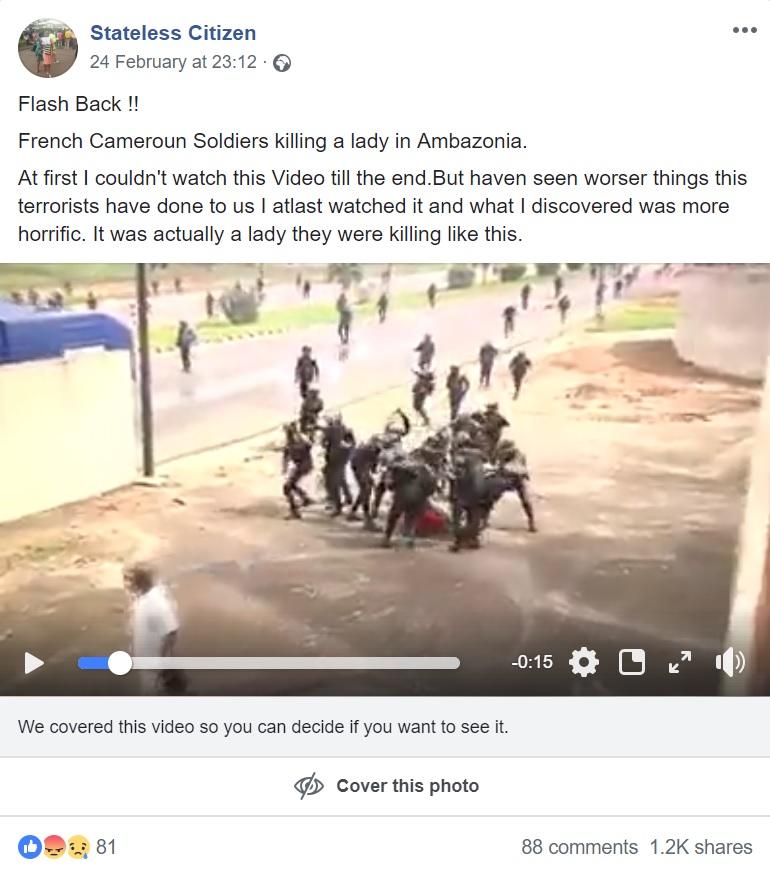
“French Cameroun Soldiers killing a lady in Ambazonia,” reads the caption.
The two English-speaking regions of Cameroon, the Northwest and Southwest, are in the grip of a conflict between the army and anglophone separatists who want to create an independent state called Ambazonia. According to the International Crisis Group, almost 500 civilians have been killed in the conflict since late 2017.
A reverse-image search using the internet tool Yandex reveals that a pro-separatist Twitter account had already posted the video back in March 2017.
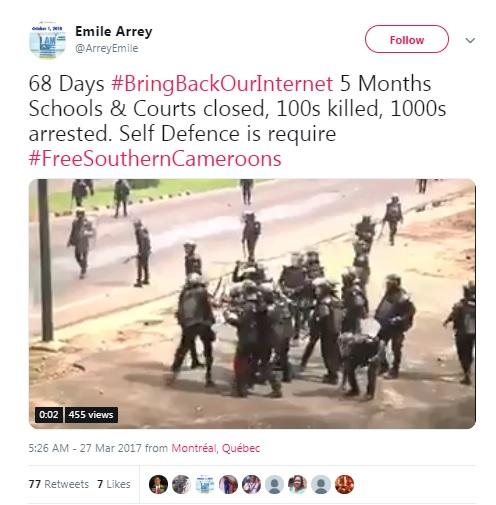
And going further back to December 2016, the footage can be found on YouTube, captioned: “New Genocide in Bamenda Cameroon”. Bamenda is the capital of the anglophone Northwest region.
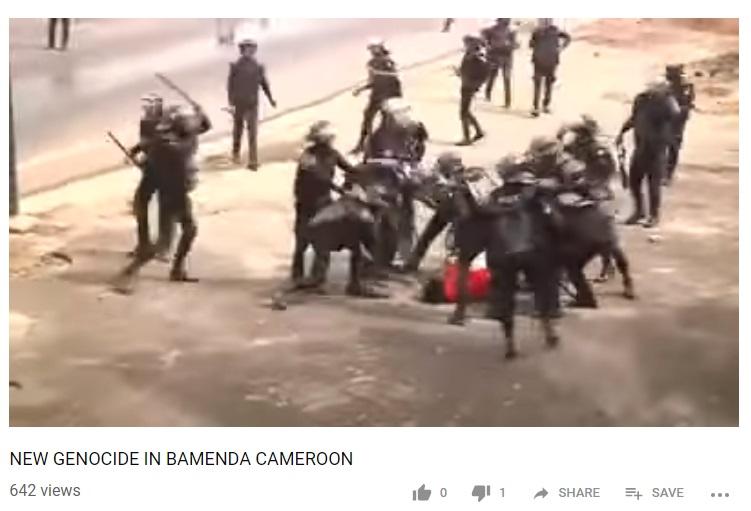
Another version of the footage, uploaded to YouTube on January 28, 2018, suggests that the video was taken in Ethiopia. Riven by ethnic tensions, the East African nation suffered a wave of anti-government protests between 2015 and early 2018, leading to mass arrests among opposition supporters. Prime Minister Hailemariam Desalegn then began releasing thousands of political prisoners in a bid to ease political tensions, a move which his successor Abiy Ahmed has pursued since taking over last year.
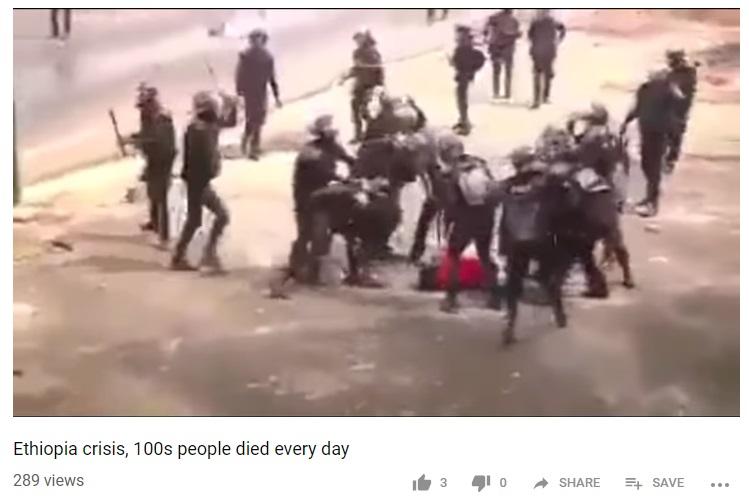
And from Cameroon and Ethiopia to the Democratic Republic of Congo: a tweet posted in January 2019 claimed the scene took place in Lubumbashi, the southern mining hub of DR Congo which was rocked by violence during the country’s presidential election campaign late last year.
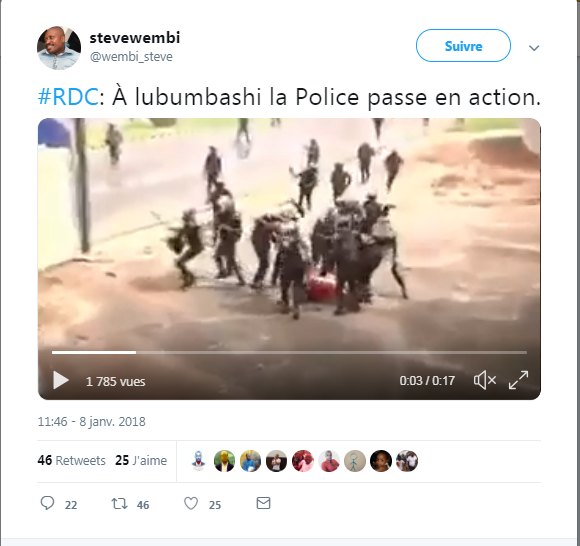
The earliest version of the video we were able to find was uploaded to YouTube on October 29, 2016. The French caption says it shows police repression during a protest in Ivory Coast a day earlier.
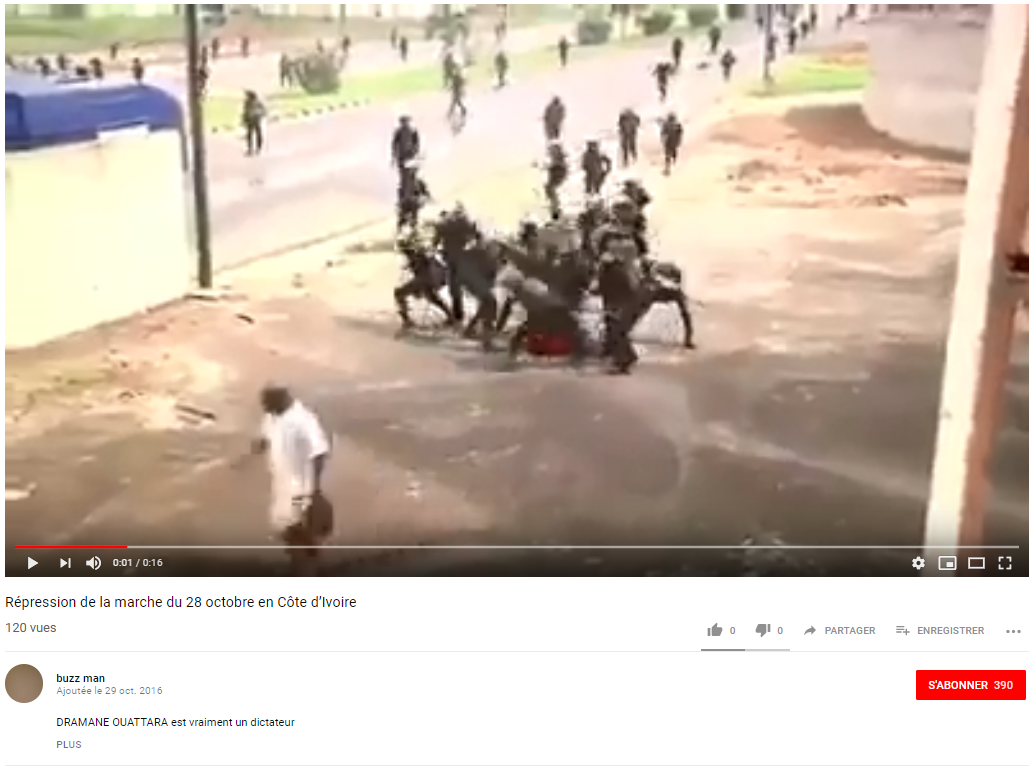
A YouTube search using the French key words “protest march Ivory Coast October 28 2016” ("Marche protestation Côte d'Ivoire 28 octobre 2016") revealed another video which was put online the day of the demonstration, showing the same scene shot from a slightly different angle.
In this video, uploaded by the account Dnewstv, you can see a water cannon used by Ivorian police.
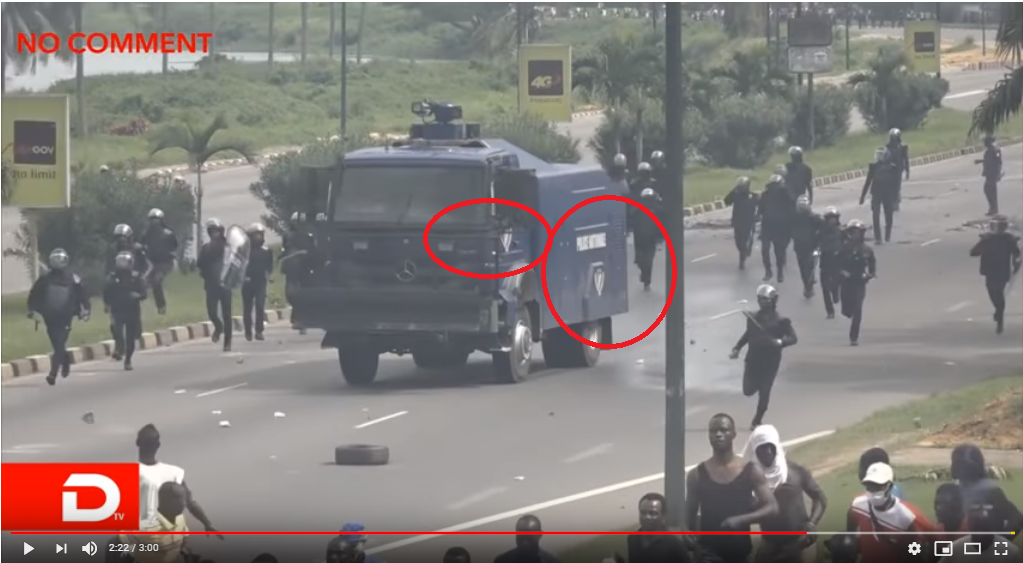
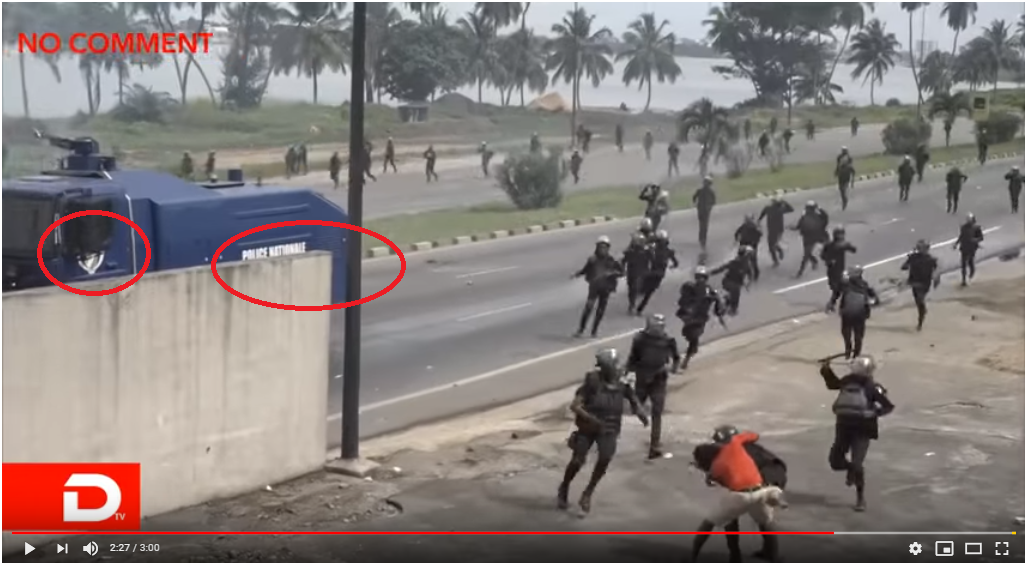
A search of the national police force’s Facebook page confirms that this type of water cannon, bearing the same insignia, is used by police in Ivory Coast.
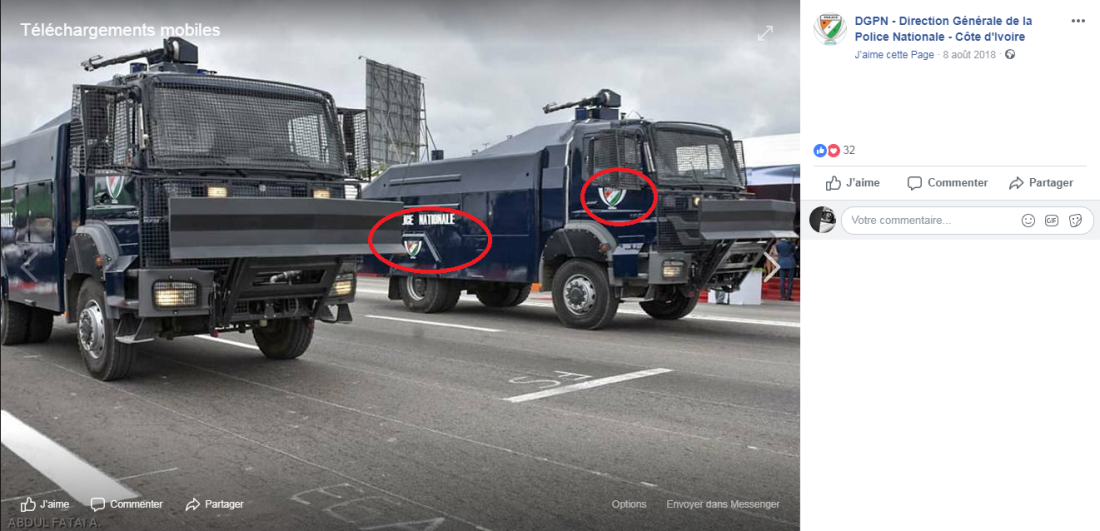
In the red circles you can see the coat of arms used by the Ivorian national police, which matches that seen on the force’s Facebook page.
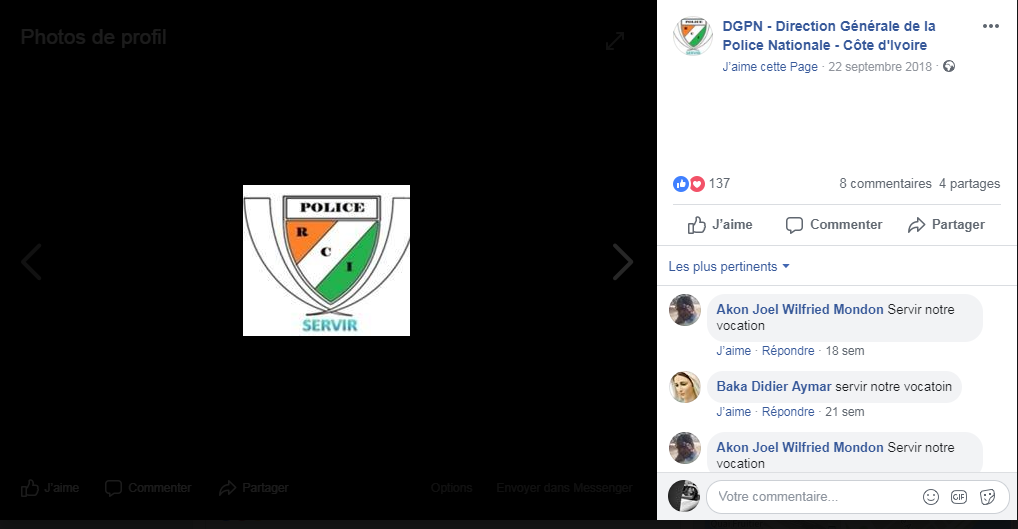
On the date given for the protest -- October 28, 2016 -- AFP reported that demonstrators had taken to the streets of Ivory Coast’s economic capital Abidjan to protest against a forthcoming referendum on constitutional changes.
In another shot from the DNewsTV video on YouTube we can see a man in a red t-shirt and beige shorts who bears a strong resemblance to the figure seen being beaten by police officers. He is standing next to a signpost which points the way to two well-known Abidjan neghbourhoods, Plateau and Cocody. The Ivorian journalist who shot the footage, Ange Hermann Gnanih, confirmed that it was filmed on October 28, 2016.
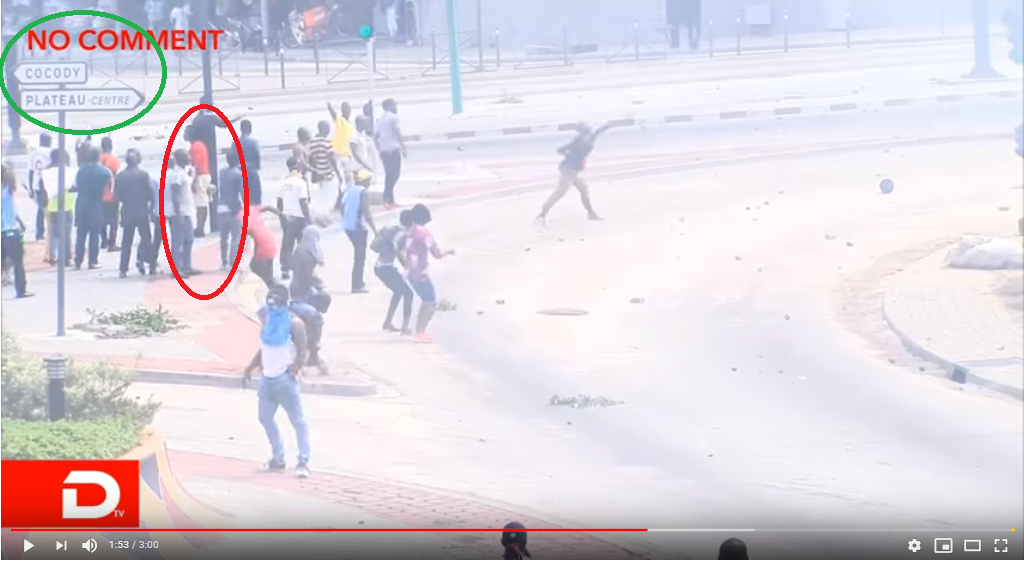
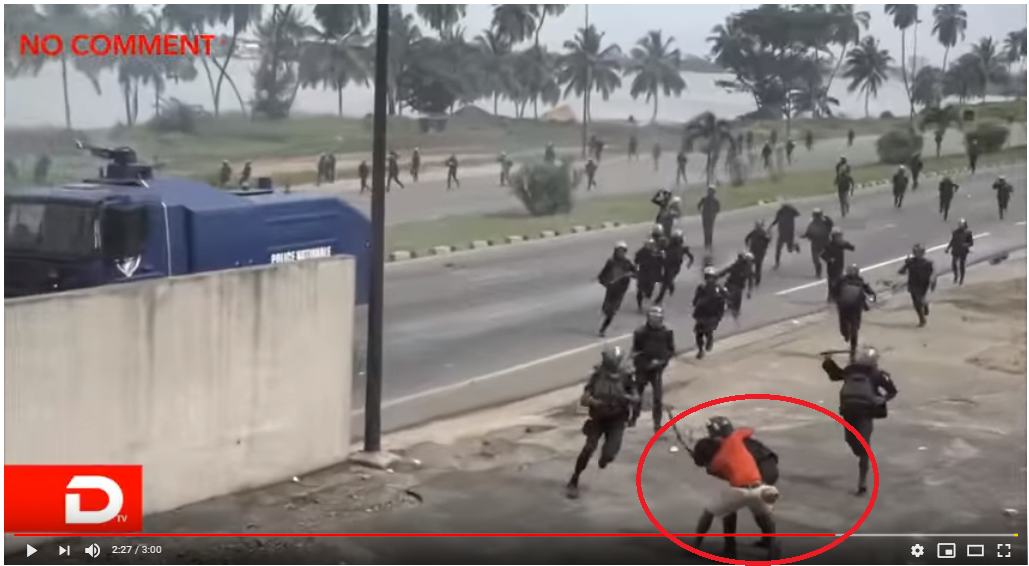
As for the person filmed being beaten, a search of AFP archives revealed a series of images taken by our photographer Issouf Sanogo during the protest. In one of them, you can see a man in a red t-shirt shaking a rattle, a traditional Ivorian musical instrument. We have pixellated his face in this screenshot to protect his identity.
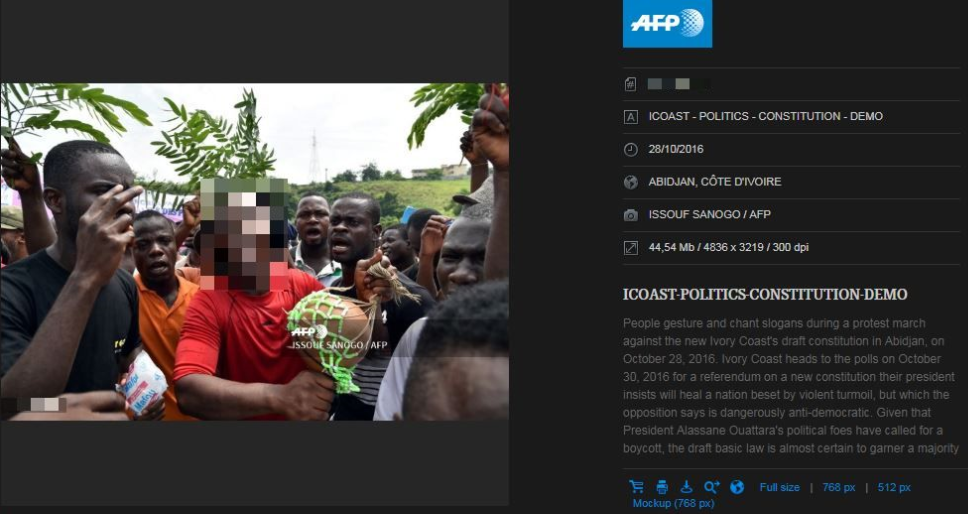
Zooming in on the DnewsTV footage, you can see the same rattle attached to the belt of the man who was beaten by police officers.
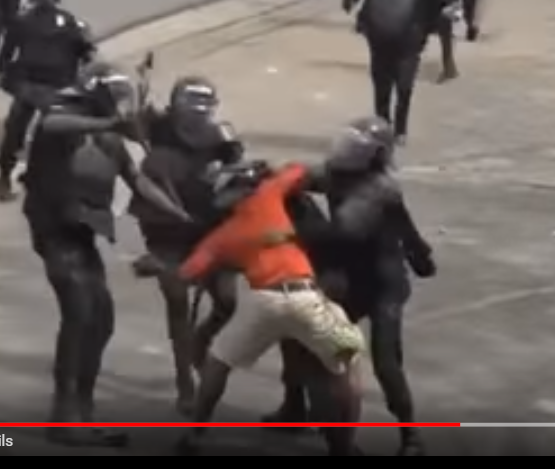
It seems likely that these two images show the same man, though we are unable to say so with total certainty.
What we can say is that the video was filmed in Abidjan, Ivory Coast, in October 2016 -- and not in Cameroon, Ethiopia or DR Congo.
Copyright © AFP 2017-2025. Any commercial use of this content requires a subscription. Click here to find out more.
Is there content that you would like AFP to fact-check? Get in touch.
Contact us
